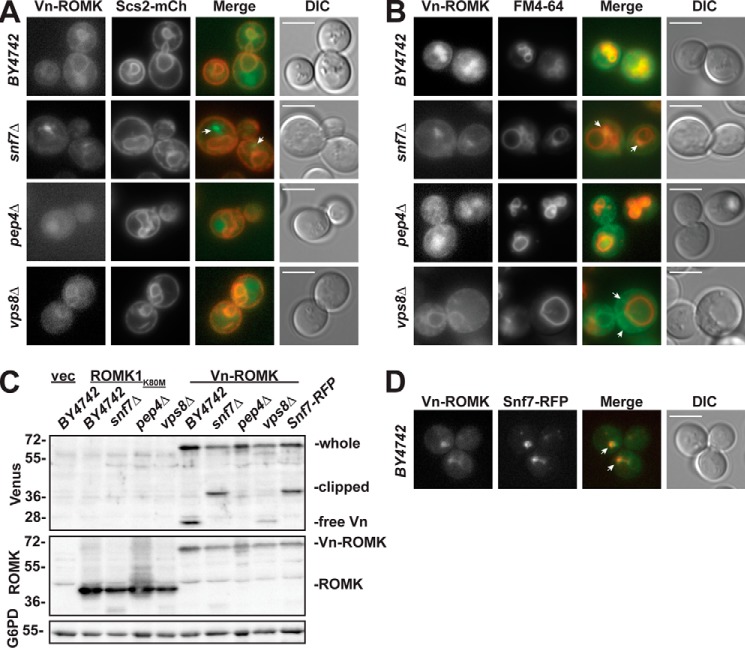Figure 7.
Venus-tagged ROMKK80M (Vn-ROMK) vacuolar trafficking is arrested in ESCRT-deficient yeast and reduced in CORVET-deficient yeast. A, epifluorescence live cell images of the indicated yeast strains coexpressing Venus-ROMKK80M (Vn-ROMK) and the ER-resident protein Scs2-mCherry (Scs2-mCh). B, epifluorescence live cell images of the indicated yeast strains expressing Vn-ROMK are shown and were treated with the styryl dye FM4-64 for at least 30 min prior to imaging to stain the endosomal and vacuolar membranes. C, Western blot analysis of lysates from yeast of the indicated genetic backgrounds expressing Vn-ROMK or untagged ROMK1K80M or containing an empty expression vector (vec) was performed using the indicated antibodies. The Venus epitope migrates as three bands: full-length Vn-ROMK (whole), a partially degraded species (clipped), and free Venus (free-Vn). The blot was stripped and reprobed with an antibody against the ROMK C terminus to show the relative expression of untagged ROMK1K80M (ROMK) and Vn-ROMK. All unlabeled bands are due to non-specific antibody binding (compare with 1st lane “vec”). Glucose-6-phosphate dehydrogenase (G6PD) is also shown as a loading control. D, epifluorescence live cell images of yeast coexpressing Vn-ROMK and Snf7-RFP. For all images, a direct interference contrast (DIC) image is shown at right. The white scale bar measures 5 μm. White arrows indicate features of interest as described in the text.

